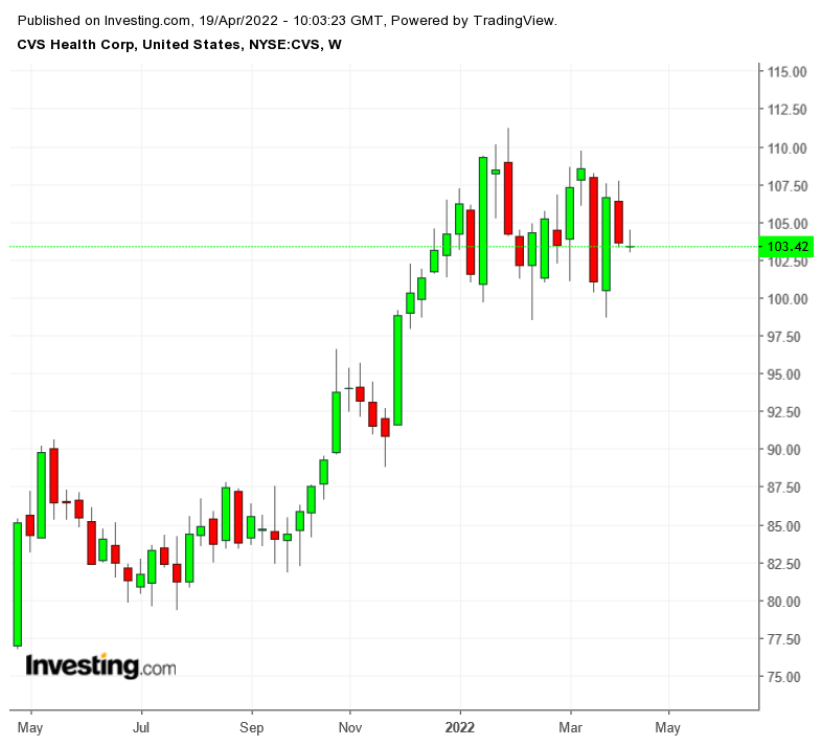Asia stocks rise: Japan surges on Takaichi bets, China buoyed by positive GDP
When Rite Aid Corporation (NYSE:RAD) reported fiscal fourth quarter earnings on Thursday, Apr. 14 ahead of the open, investors in the Camp Hill, Pennsylvania pharmaceuticals retail chain cheered. Though it missed on EPS forecasts it beat on revenue expectations.
RAD stock popped at the open, up 15%, and at its session high had gained more than 21%.

But those gains quickly reversed. By the close of trading, shares were down 3.6%, barely 3% above the 30-month low reached just the week before. The stock finished yesterday at $7.04, even lower than last Thursday's $7.22 close.
That whipsawing sentiment makes some sense. From a headline perspective, Rite Aid's earnings report looked solid, or at least better than feared. But a closer look shows that long-running worries about the company's viability haven't gone anywhere.
Those fears are valid. Rite Aid is in real trouble. While a high-risk, high-reward case for the stock remains, investors in the retail pharmacy space probably should look to the sector's strongest player, rather than its weakest.
Analyst Note Sends Rite Aid Stock Tumbling
A week before the earnings release, Deutsche Bank analyst George Hill slashed his price target on RAD stock, from $16 down to just $1.
Hill wrote that Rite Aid's preliminary outlook for fiscal 2023—over $430 million in Adjusted EBITDA (earnings before interest, taxes, depreciation and amortization)—“seems to be unattainable.” And in a scenario where EBITDA guidance was cut below $400 million, the analyst said that Rite Aid stock “arguably has no value.”
The problem is that Rite Aid has significant interest payments, totaling roughly $200 million a year. Capital expenditures were nearly $200 million in both FY21 and FY22. Under $400 million in EBITDA, then, Rite Aid would likely have negative free cash flow. That, combined with a debt load of over $2.7 billion, presents a roadmap to a bankruptcy that would wipe out RAD shareholders.
The Good and Bad News in Rite Aid Earnings
Deutsche's note pummeled Rite Aid stock—it plunged 17% to the aforementioned 30-month low. At first glance, Q4 earnings last week seem to prove the analyst wrong.
Rite Aid in fact guided for $460 million to $500 million in Adjusted EBITDA in fiscal 2023. The company projected positive free cash flow as well.
During the fourth-quarter conference call, the news seemed to get even better. Chief financial officer Matt Schroeder closed his prepared remarks by issuing a three-year target of 10% to 20% bottom-line growth off the fiscal 2022 base.
That in turn suggested Rite Aid was looking for as much as $600 million in Adjusted EBITDA by fiscal 2025. That level would mean solidly positive free cash flow and improved sentiment toward the company's debt load.
But the market's reaction to earnings as the day went on highlights a core problem: investors simply don't trust the outlook. Part of the reason is the company's long history of overpromising and underdelivering. Another part is how the company plans to hit its guidance this year.
Rite Aid is getting a $60 million benefit from store closures. That's largely one-time. $40 million is coming from reduced corporate costs; those types of cuts, too, can't be found every year. An additional $45 million is coming from reduced labor at the store level, thanks to newfound efficiencies.
Capital expenditures are actually increasing, to $250 million. The only reason free cash flow should be positive this year is because of a boost from working capital on the balance sheet—a boost that, too, can't recur annually.
Essentially, Rite Aid is pulling multiple levers simply to keep profits down modestly from the $506 million in Adjusted EBITDA generated in FY22. Yet the company is telling investors that over the following two years, those same profits are going to grow in the range of 25% (against the $480 midpoint of this year's EBITDA guidance).
The market clearly is skeptical.
The Case for CVS Over RAD Stock
Skepticism seems like the appropriate reaction. Rite Aid has been promising growth for years, going back to when former CEO John Standley was in charge. He left the company in mid-2019 after more than nine years in the chief executive role. The company simply hasn't delivered.
There are many reasons why. Execution seems to have been lacking. Just two years ago, it looked like the company's Pharmacy Benefit Management (PBM) business had turned the corner, with revenue growth of 23% in Q4 FY20 and 26% the following quarter. But that growth, per management commentary at the time, was driven by Medicare Part D membership. Rite Aid now, according to the most recent call, is de-emphasizing Part D, because it turned out Part D customers weren't profitable enough (or perhaps not profitable at all).
But possibly the biggest problem is that the retail pharmacies simply aren't a very good business. Indeed, it hasn't been for quite some time.
Rite Aid stock isn't the only one within this particular healthcare segment that has struggled. Walgreens Boots Alliance (NASDAQ:WBA) is down more than half from its 2015 highs; WBA shares touched a 15-month low last week and closed on Monday at $44.50.
Retail pharmacies face a difficult combination of challenges at the moment. Sales of non-prescription items—known as “front end” sales—have been pressured by increasingly convenient delivery, including next-day and same-day services to customers who don't ever set foot in the stores. Plus, reimbursement rates from the federal government aren't rising.
Historically, pharmacies like Rite Aid turned to generic drugs to offset some of that pressure, but new generics haven't been nearly as meaningful for some time.
In fiscal 2022, Rite Aid is guiding for EBITDA that is down more than 40% from its pro forma figure of five years earlier. EBITDA margins have gone from almost 4% to barely 2%.
Over the past five years, Rite Aid really hasn't developed a coherent, feasible strategy for fighting back against the mounting pressure. It tried at one point to merge with grocery chain Albertsons (NYSE:ACI), only for the deal to be terminated amid shareholder opposition. It promised growth via its services and benefits subsidiary Elixir, but that growth wasn't profitable enough.
Rite Aid has even redesigned stores, but that hasn't helped traffic. It's partnered with Amazon (NASDAQ:AMZN); that, too, didn't move the needle.
Increasingly, Rite Aid simply looks like an overleveraged company in a difficult industry facing bigger competitors with more scale. That's a brutal combination.
At the same time, investors seem to have better choices elsewhere. Walgreens has its own problems, but the stock is in a similar range fundamentally, though its balance sheet is not quite as leveraged and its footprint is larger. CVS Health (NYSE:CVS) seems like the best pick of the group.

To be sure, CVS stock has rallied quite a bit already—it's gained 36.5% over the past year. But it's not as if shares are expensive. The stock closed on Monday at $103.42.
The stock trades at 11.5x forward earnings. The acquisition of Aetna in late 2017 increasingly looks like a winner. CVS is strong in PBM. In retail, CVS continues to outperform both Rite Aid and Walgreens on both front-end sales and prescription count.
Investors in CVS are paying up for quality, certainly. But they're not paying up so much that returns will suffer.
And in this sector, paying for quality seems like a necessity: indeed, the same reasons why CVS has outperformed Rite Aid so far seem like the very reasons it should outperform going forward as well.
